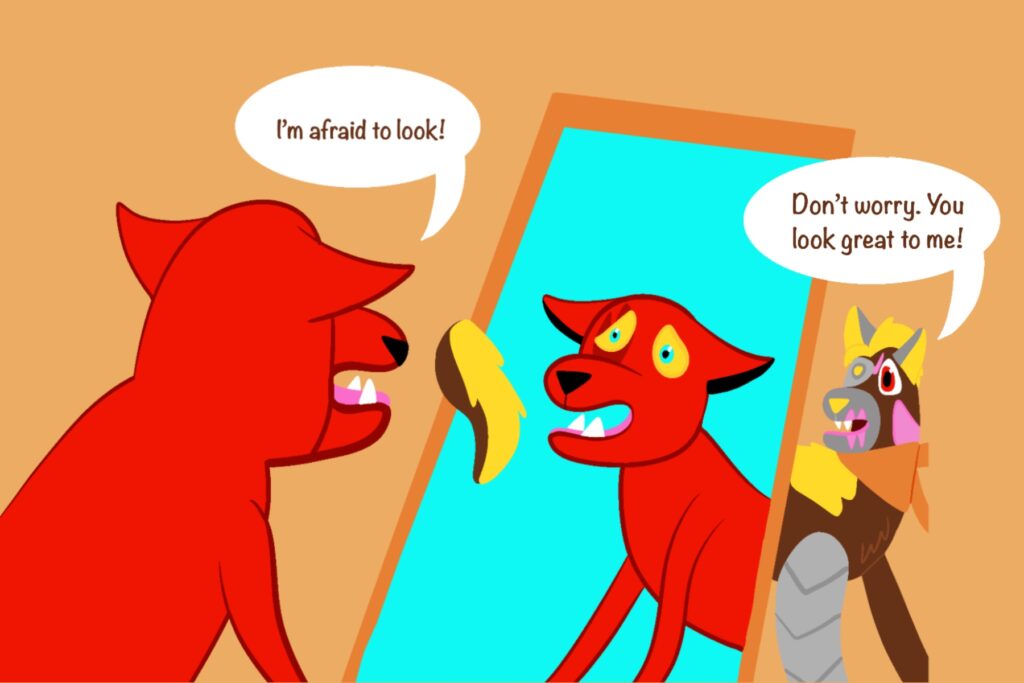by Brian

Vanity aside, do you really like to look at yourself in the mirror?
Our son Dylan does not like mirrors. For many years, we found he did not brush his hair very well, often leaving it wet or looking like he just rolled out of bed. He also rarely shaves his facial hair. We have been discussing this with him for quite a while, getting on his case to consistently perform both these basic habits. It was a source of frustration to us why he chose not to participate in these basic grooming activities that are expected by societal norms.
I always thought this was a strange thing for Dylan to take a stand against. While I understand that he may not be as concerned about his appearance as many young adults, it takes relatively minimal effort to follow through on these daily activities. Dylan is also wired to love praise from mom, and her sincere “hey you look really nice today” should have meant more to him. When we did occasionally get his commitment to brush his hair and shave, it came with other issues. Our unkempt, unshaven kid would tend to come out of the bathroom looking like Kevin Bacon from Footloose sporting a Hitler mustache!
No matter how hard we worked with Dylan, this situation did not seem to get better. Recently, we began to suspect there was more going on. We had him show us how he was trying to brush his hair and found he would avoid actually looking into the mirror. It was a bit like he was refusing to enter a staring competition with himself. It became clear that it was not his lack of desire to do these things nor to look good, but a complete discomfort with looking at himself in the mirror. You should try to shave, brush your hair, or put on makeup without ever looking directly into the mirror. I tried it and believe me it is not easy.
The solution was quite simple. We gave Dylan a small, round mirror like those used to put in contact lenses or apply makeup. He can use it to clearly see only a specific part of his face or his head. This allows him to shave or brush his hair without ever having to look himself in the eye.
On a related note, I recently found a “mirror” setting in the video conferencing that my company uses that allows your image to appear opposite, like you are looking into a mirror. Strangely, I could not have imagined how much more comfortable this setting makes me feel about my image on the screen. It seems that I never realized that I had only “dynamically” seen my facial features through a reflection in the mirror. I find that I now face the camera directly and act more naturally when talking one-on-one or in small groups via video conference. Or perhaps the person I have been staring at all these years, that man in the mirror, is just a really talented speaker.